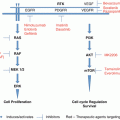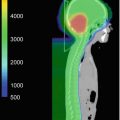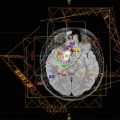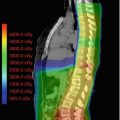Histologic subtype
Region and reference
Years
Incidence rate (95% CI)
All brain tumors
Europe (Peris-Bonet et al. 2006)
1988–1997
2.99
United States (Ostrom et al. 2013)
2006–2010
5.26 (5.19–5.33)
Japan (Makino et al. 2010)
1989–2008
3.61
Kuwait (Katchy et al. 2013)
1995–2011
1.12
Denmark, Finland, Norway, and Sweden (Schmidt et al. 2011)
1985–2006
4.20
Pilocytic astrocytoma
United States (Ostrom et al. 2013)
2006–2010
0.90 (0.87–0.93)
England (Arora et al. 2009)
1995–2003
0.75
Astrocytoma
Europe (Peris-Bonet et al. 2006)
1988–1997
1.18
Japan (Makino et al. 2010)
1989–2008
1.32
Denmark, Finland, Norway, and Sweden (Schmidt et al. 2011)
1985–2006
1.79
Ependymoma
Europe (Peris-Bonet et al. 2006)
1988–1997
0.34
United States (Ostrom et al. 2013)
2006–2010
0.28 (0.26–0.30)
Japan (Makino et al. 2010)
1989–2008
0.15
Denmark, Finland, Norway, and Sweden (Schmidt et al. 2011)
1985–2006
0.42
England (Arora et al. 2009)
1995–2003
0.25
Embryonal tumors
United States (Ostrom et al. 2013)
2006–2010
0.80 (0.77–0.84)
Denmark, Finland, Norway, and Sweden (Schmidt et al. 2011)
1985–2006
0.73
England (Arora et al. 2009)
1995–2003
0.28
PNET
Austria (Woehrer et al. 2010)
1996–2006
0.21 (0.15–0.30)
England (Arora et al. 2009)
1995–2003
0.08
Medulloblastoma
Japan (Makino et al. 2010)
1989–2008
0.37
Austria (Woehrer et al. 2010)
1996–2006
0.58 (0.16–0.71)
England (Arora et al. 2009)
1995–2003
0.20
ATRT
Austria (Woehrer et al. 2010)
1996–2006
0.14
United States (Ostrom et al. 2013)
2006–2010
0.11 (0.10–0.12)
1.2.1 Glioma
Gliomas arise from glial cells and overall are the most common category of childhood brain tumor (Bauchet et al. 2009). Incidence (Table 1.1) and survival (Table 1.2) vary significantly depending on location and histologic subtype. The most common type of glioma in children is pilocytic astrocytoma.
Table 1.2
Five-year survival of selected childhood brain tumors by histology and region
Histologic subtype | Region and reference | Years | 5-year survival (95% CI) |
|---|---|---|---|
All brain tumors | Europe (Peris-Bonet et al. 2006) | 1988–1997 | 91.0 (60.0–62.0) |
United States (Ostrom et al. 2013) | 2006–2010 | 72.3 (71.2–73.3) | |
Sweden (Lannering et al. 2009) | 1984–2005 | 76.0 | |
Ependymoma | Europe (Peris-Bonet et al. 2006) | 1988–1997 | 53.0 (49.0–57.0) |
United States (Ostrom et al. 2013) | 1995–2010 | 72.2 (67.9–76.1) | |
Sweden (Lannering et al. 2009) | 1984–2005 | 72.0 | |
Astrocytoma | Europe (Peris-Bonet et al. 2006) | 1988–1997 | 75.0 (73.0–76.0) |
Sweden (Lannering et al. 2009) | 1984–2005 | 84.0 | |
Pilocytic astrocytoma | United States (Ostrom et al. 2013) | 2006–2010 | 97.2 (96.3–98.0) |
Embryonal tumors | United States (Ostrom et al. 2013) | 1995–2010 | 62.1 (59.6–64.5) |
PNET | Europe (Peris-Bonet et al. 2006) | 1988–1997 | 49.0 (46.0–51.0) |
United States (Ostrom et al. 2013) | 1995–2010 | 49.5 (45.3–53.6) | |
Sweden (Lannering et al. 2009) | 1984–2005 | 47.0 | |
Medulloblastoma | United States (Ostrom et al. 2013) | 1995–2010 | 71.1 (68.5–73.5) |
Sweden (Lannering et al. 2009) | 1984–2005 | 63.0 | |
ATRT | United States (Ostrom et al. 2013) | 1995–2010 | 28.0 (20.7–35.7) |
1.2.1.1 Pilocytic Astrocytoma
Pilocytic astrocytoma (World Health Organization [WHO] grade I) is the most common childhood brain tumor, representing approximately 17% of all CNS tumors in children (Ostrom et al. 2013). The incidence of these tumors ranges from 0.7 to 0.9 cases per 100,000 persons (Table 1.1). While these tumors are low grade, rarely they may progress to higher-grade malignancies (Fisher et al. 2008; Stokland et al. 2010). Overall 5-year survival is high at 97% (Table 1.2) (Ostrom et al. 2013).
1.2.1.2 High-Grade Glioma
High-grade gliomas represent 7–11% of childhood brain tumors. The most common high-grade gliomas are anaplastic astrocytoma and glioblastoma. Overall, high-grade gliomas (WHO grade III and IV) are less common, with incidence rates of 0.08 for anaplastic astrocytoma and 0.14 for glioblastoma (Ostrom et al. 2013). These tumors have a very poor 5-year survival, which is often <30% (Johnson et al. 2014).
1.2.1.3 Brain Stem Gliomas
Brain stem tumors represent approximately 10% of childhood brain tumors which vary widely by biology, natural history, and outcomes. The most common of these tumors is diffuse intrinsic pontine glioma (DIPG) (Freeman and Farmer 1998). Survival for those diagnosed with DIPG is very poor, with >90% of cases dying within 2 years of presentation (Hargrave et al. 2006). These tumors are rarely biopsied, instead diagnosed by imaging, and as a result, their true incidence from cancer registry datasets is difficult to assess (Hargrave et al. 2006).
1.2.2 Embryonal Tumors
Embryonal tumors are believed to arise from disrupted embryonic cells remaining in the CNS after birth. There are three major embryonal tumor types with distinct differences in age at diagnosis and survival: medulloblastoma, primitive neuroectodermal tumor, and atypical teratoid/rhabdoid tumor (Louis et al. 2007).
1.2.2.1 Medulloblastoma
Medulloblastomas are the most common embryonal brain tumors, with an annual incidence ranging from 0.20 to 0.58 cases per 100,000 persons. Recent data suggest 1-year survival is 52%, 90%, and 92% for children aged 0–1, 1–9, and 10–19 years, respectively (Smoll 2012). Molecular analysis has identified four distinct medulloblastoma subtypes that correlate strongly with survival (Rutkowski et al. 2010). No population-based studies of subtype-specific survival have been reported, but in an international meta-analysis children with WNT tumors had a 95% 10-year overall survival. Children with sonic hedgehog (SHH), group 3, and group 4 tumors had 51%, 50%, and 32% 10-year survival, respectively (Kool et al. 2012).
1.2.2.2 Primitive Neuroectodermal Tumor (PNET)
PNET represents the second most common form of embryonal brain tumor. Average annual incidence rates for PNET range from 0.08 to 0.21 cases per 100,000 persons. PNET survival appears to improve with increasing age of diagnosis. For instance, 1-year survival is 31%, 88%, and 95% for children aged 0–1, 1–9, and 10–19 years, respectively (Smoll 2012). Given that PNETs and medulloblastoma share a similar histology, the 1993 WHO criteria specified a categorization based on location. Specifically, those tumors that are supratentorial are considered PNETs, whereas those that are infratentorial are considered to be medulloblastoma. Classification continues to evolve. PNET is no longer considered to be one disease. In fact, there are several subtypes and the correct classification remains challenging (Pfister et al. 2010).
1.2.2.3 Atypical Teratoid/Rhabdoid Tumor (AT/RT)
AT/RT is a rare embryonal CNS tumor that most commonly occurs in children <3 years of age. The annual incidence ranges from 0.07 to 0.14 per 100,000 persons (Johnson et al. 2014; Woehrer et al. 2010). Prognosis is generally poor, though survival increases with age (Hilden et al. 2004; Lafay-Cousin et al. 2012; von Hoff et al. 2011; Woehrer et al. 2010). Overall, median survival is usually between 6 and 18 months (Athale et al. 2009; Lafay-Cousin et al. 2012; Lee et al. 2012; von Hoff et al. 2011). This tumor is typically more common among males (Heck et al. 2013; Lafay-Cousin et al. 2012) and among non-Hispanic whites (Bishop et al. 2012). A systematic diagnostic approach for AT/RT was not common until 2005; prior to that these tumors were frequently misclassified, mostly as medulloblastoma or PNET (Woehrer et al. 2010).
1.2.3 Other Brain Tumors
1.2.3.1 Choroid Plexus Carcinoma
Choroid plexus carcinomas constitute a very small percentage of childhood brain tumors (1–4%). Most of these tumors (70%) occur during the first year of life, and 5-year survival can be <30% (Johnson et al. 2014).
1.2.3.2 Ependymoma
Ependymomas constitute approximately 10% of all brain tumors in children. Over 90% of these tumors are intracranial. The highest incidence occurs within the first 7 years of life and the overall 5-year relative survival rate is 82% (Johnson et al. 2014). Additionally, males appear to be more likely to develop ependymoma compared to females (Johnson et al. 2014).
1.2.3.3 Craniopharyngioma
While craniopharyngiomas account for between 6 and 9% of all brain tumors in children, these tumors rarely occur in infants. In fact, the peak incidence during childhood is between 8 and 10 years of age. A recent assessment using data from the Surveillance, Epidemiology and End Results (SEER) Program indicated that 1-year survival rates were >90%. However, up to 75% of these children have significant complications including hypothalamic obesity (Hoffmann et al. 2015).
1.2.3.4 Germ Cell Tumors
Germ cell tumors are a mixed grouping of brain tumors classified on the basis of histological and immunohistochemical features. The WHO recognizes multiple different types of germ cell tumors, ranging from pure germinomas, mature teratomas to variety of highly aggressive nongerminomatous germ cell tumors. The incidence of these tumors is relatively low at 0.051 per 100,000 but varies by geography (e.g., the incidence is higher in some Asian countries compared to the USA) (de Robles et al. 2014c).
1.3 Analytic Epidemiology
1.3.1 Environmental Risk Factors
1.3.1.1 Radiation Exposure
High-dose radiation to the head and neck for treatment of cancer or other conditions is an established risk factor for childhood brain tumors (Kleinerman 2006). Cranial radiation therapy for acute lymphoblastic leukemia is associated with a particularly high risk for developing (Ohgaki and Kleihues 2005) brain tumors (gliomas, PNETs) in children who received prophylactic CNS irradiation (usually a cumulative dose of 25 Gy, which is no longer part of contemporary therapy). Additionally, childhood exposure to low-dose ionizing radiation for tinea capitis has been associated with benign meningiomas and malignant brain tumors (Sadetzki et al. 2005). The latency between radiation therapy and subsequent brain tumor development has been estimated at 7–9 years with a higher risk for children diagnosed earlier in life (Ohgaki and Kleihues 2005). It has also been broadly accepted for several decades that in utero diagnostic radiation exposure is associated with a small to moderate dose-dependent increase in childhood cancer risk, including brain tumors (Streffer et al. 2003).
Ionizing Radiation
A study using data from the Childhood Cancer Survivor Study reported that children who received radiation therapy for their first primary CNS tumor were 7 times more likely to develop a subsequent CNS tumor (Neglia et al. 2006). The evidence regarding diagnostic X-ray exposure and childhood brain tumor risk is not well established. For example, in one study, while those who were exposed to diagnostic X-ray as neonates were 2 times more likely to develop a childhood brain tumor, this association was not statistically significant (Mellemkjaer et al. 2006). A Swedish study of individuals born between 1975 and 1984 examined the association between prenatal abdominal radiation exposures and childhood brain tumors. While there was not an increased risk overall, exposed individuals were twice as likely to develop a PNET (Stalberg et al. 2007). In a recently conducted study in the USA, maternally reported postnatal exposures to diagnostic X-rays were not associated with childhood medulloblastoma or PNET (Khan et al. 2010).
Nonionizing Radiation
Sources of nonionizing radiation that have been studied for their role in childhood brain tumor risk include radio frequency/microwave (e.g., cell phones, AM and FM radio, televisions, microwaves) and extremely low-frequency magnetic fields (e.g., power lines and electrical wiring). These exposures have been classified as possibly carcinogenic by the International Agency for Cancer Research (International Agency for Cancer Research 2014). However, epidemiologic studies have shown few significant positive associations between nonionizing radiation exposure and childhood brain tumors (Johnson et al. 2014).
1.3.1.2 Other Environmental Risk Factors
While there have been several epidemiologic studies of childhood brain tumors, few risk factors have been confirmed and established. Additionally, very few of these have led to prevention strategies. A recent review concluded that the strongest evidence for childhood brain tumor risk factors was for hereditary cancer predisposition syndromes and therapeutic ionizing radiation (Johnson et al. 2014). While some risk factors including parental age, birth defects, and pesticides have suggestive evidence, other factors including maternal medications and parental occupational exposure during pregnancy have only weak or insufficient evidence (Johnson et al. 2014).
1.3.2 Genetic Factors
1.3.2.1 Hereditary Cancer Predisposition Syndromes
Up to 10% of pediatric cancers occur in the context of a set of well-described hereditary cancer predisposition syndromes (HCPSs) (Strahm and Malkin 2006). Individuals affected by these rare conditions are at greatly increased risk of developing malignancies at levels 10–100 fold above those seen in the general population. Several clues may raise suspicion for the presence of one of these conditions. An individual may have a specific tumor (or subtype) which is commonly associated with genetic susceptibility (e.g., optic pathway glioma with Neurofibromatosis Type 1) (Listernick et al. 2007). A tumor may occur at a significantly younger age than seen in the general population (e.g., childhood meningioma and Neurofibromatosis Type 2) (Evans et al. 1999, 2005; Thuijs et al. 2012). Family history, clinical features, certain laboratory values, or imaging abnormalities may indicate the presence of HCPS. Multiple primary tumors may occur in the same individual. A comprehensive family history may also trigger a genetic evaluation either due to a relative who has been diagnosed with a hereditary cancer predisposition syndrome or suggestive clinical history evident in the pedigree.
HCPSs are associated with increased risk of pediatric brain tumors (Table 1.3) may be categorized by their pattern of inheritance: autosomal dominant or autosomal recessive. The autosomal dominant syndromes can be further subdivided into neurocutaneous disorders, familial colon cancer syndromes involving elevated risks of brain tumors (i.e., Turcot Syndrome), and conditions exclusively having oncologic features. The autosomal recessive syndromes associated with increased childhood brain tumor susceptibility share impaired DNA repair as their underlying defect. Select examples for each of these syndrome groupings will be presented (extended listing in Table 1.3).
Table 1.3
Hereditary cancer predisposition syndromes associated pediatric brain tumors
Syndrome | Select clinical features | Brain tumors |
|---|---|---|
Autosomal dominant | ||
Neurocutaneous disorders | ||
Dermatologic: Café-au-lait macules, axillary and inguinal freckling, neurofibromas Other: Lisch nodules and vasculopathy | Optic pathway glioma Other low-grade glioma | |
Dermatologic: Café-au-lait macules (few) Ophthalmologic: Posterior subcapsular lens opacity, epiretinal membrane | Bilateral vestibular schwannomas Other schwannomas Meningioma Ependymoma | |
Tuberous Sclerosis Complex (Northrup and Krueger 2013) | Neurologic: Seizures, cortical tubers, subependymal nodules Dermatologic: Facial angiofibromas, hypomelanotic macules, shagreen patches Other: Renal angiomyolipoma, cardiac rhabdomyoma, retinal hamartoma | Subependymal giant cell astrocytoma (SEGA) |
Oncologic: Pheochromocytoma, renal cell carcinoma, tumors and cysts of abdominal visceral organs Other: Retinal angiomas | Cerebellar hemangioblastoma Spinal hemangioblastoma | |
Dermatologic: Basal cell nevi/carcinoma, palmar/plantar pits Skeletal: Macrocephaly, frontoparietal bossing, bifid ribs, vertebral anomalies, odontogenic jaw cyst | Medulloblastoma | |
Familial colon cancer (Turcot) | ||
Oncologic: Gastrointestinal, hepatobiliary, uterine, ovarian, ureteral cancers | Glioblastoma multiforme Other glioma | |
Oncologic: Gastrointestinal and thyroid cancers, desmoid tumor, osteoma Other: Congenital hypertrophy of retinal pigment epithelium | Medulloblastoma | |
Exclusively cancer predisposing
Stay updated, free articles. Join our Telegram channel
Full access? Get Clinical Tree
 Get Clinical Tree app for offline access
Get Clinical Tree app for offline access

| ||





